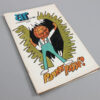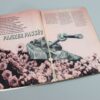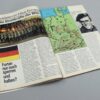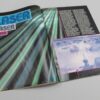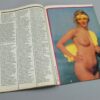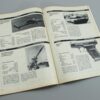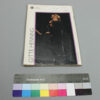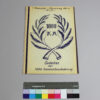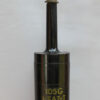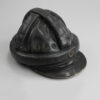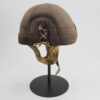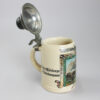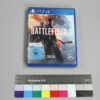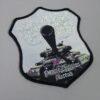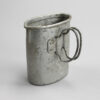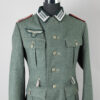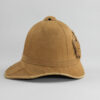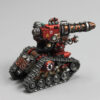Army Review 5/90 “Tanks passé?”
Inventory number: Ü 497
Shortly after the NVA was founded in 1956, the GDR’s military publishing house began publishing magazines and newspapers for various target groups, such as the weekly newspaper “Volksarmee”, the magazine “Militärwesen” for officers and the magazine “Militärgeschichte”. The magazine “Armeerundschau” with the subtitle “Zeitschrift für Militärwesen, Politik und Kultur in der Nationalen Volksarmee” and later “Magazin des Soldaten” was also aimed at the civilian population. Only around five percent of the magazines sold went to the NVA and border troops.
According to the publication regulations of the military publishing house, the media were to ensure “the education of the various readerships in the National People’s Army and the general public”. To achieve this, the Army Review was to be designed to be particularly attractive and entertaining so that the positive image of the NVA and its allies also reached the population. Despite the large amount of military content, such as insights into everyday life in the NVA, portraits of foreign armed forces, weapon type sheets and articles on modern technology, the language of the Army Review was relaxed and also included cultural topics and entertainment such as poems, puzzles and pictures of stars and nude models.
The Armeerundschau was initially published in DIN A4 format; when the format was reduced to A5 in 1962 and switched to four-color printing, the circulation soared: starting with 11,000, the number of copies sold increased tenfold and in 1979 the circulation even reached 340,000.
The editorial team attached great importance to contact with readers: They published and answered readers’ letters and comments in several sections. According to the editorial team, they received around fifty thousand letters a year. These were also used to find out whether the magazine’s content was being received by readers in the desired way. Letters to the editor with supposedly security-related content were sent to the NVA press editorial offices and forwarded to the Department for Security Issues at the Central Committee of the SED.
The Youth Research Institute in Leipzig came to the conclusion that almost all young people were familiar with the Armeerundschau and that one in three read it constantly or occasionally. The magazine mainly reached 16 to 18-year-olds, a third of whom were female. The Armeerundschau was therefore able to exert a great influence on the image of the NVA among young people in the GDR. The Special Propaganda Administration of the NVA’s Political Main Administration was also aware of this, which is why it closely monitored the content – more or less strictly depending on the political situation. For example, the editorial offices had to have their annual plans approved and there was both pre- and post-censorship of the articles. However, the wide distribution of the magazines is no indicator of their actual impact on young people or their approval of the content.
With the political upheaval in 1989, the magazine was given unprecedented freedom in terms of content and gave itself the subtitle “The international military magazine”. During this period of upheaval, many people asked themselves what a German army could look like in the future. In one of the last issues of Armeerundschau in May 1990, the military historian and then editor-in-chief of the GDR magazine “Militärwesen” discussed what place tanks could have in these visions of the future. The article “Panzer passé?” opens with a collage of a T-72 with a knot in its barrel driving through a pink flower meadow. However, according to the author, the tank may have had its day as an offensive weapon of aggressive war for purely national defense. The high costs and poor environmental balance also made tanks appear less sustainable: However, as could already be foreseen during the Vienna negotiations on the reduction of conventional armed forces, which began in March 1989, only a reduction, but not an abolition of armored forces was up for debate. However, according to the author, tanks were “not yet passé, but only for the time being.” The Armeerundschau, on the other hand, was already passé two months later: like most NVA periodicals, it was discontinued in the summer of 1990.
Object of the month
(short) stories from the depot
Unfortunately, many objects cannot currently be shown in the exhibition for conservation reasons. Here you will find unusual objects and exciting stories of special pieces from the depot


